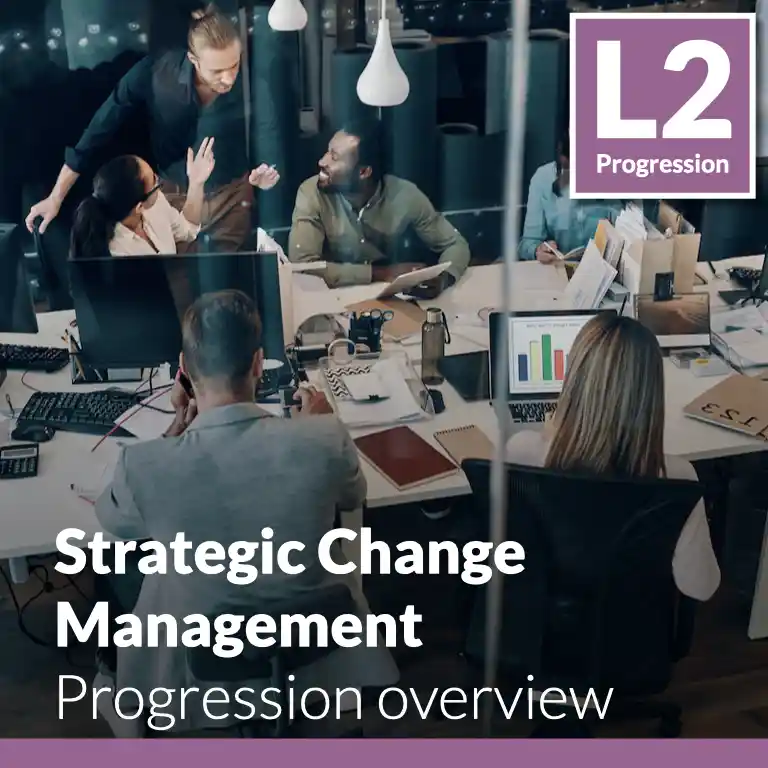Enjoy instant access to a scalable system of proven practices and execution-ready tools. Built to launch strategic HR programs 5X faster!
✓ Enjoy platform access
✓ Create your HR roadmap
✓ View open content in library
✓ Access dozens of practices:
⤷ The HR Strategy program
⤷ Explainers and deep dives
⤷ Supplemental guides
⤷ Insight articles
⤷ Weekly best practices
⤷ And more!
100% Free. No credit card required.
This guide is part of a progression set comprised of Core, Advanced, and Emerging Strategic Change Management practices.
Not all change initiatives are created equal. Highly complex change initiatives require a higher-touch approach to effectively prepare the organization. Advanced change management practices enable organizations to successfully launch fundamental shifts that require a high degree of change, such as reimagining processes, redesigning organization structures, transforming company culture, and implementing leading-edge technologies.
For highly complex changes, teams must gather, analyze, and action findings from data analytics to inform and adapt the change strategy. Qualitative and quantitative data can be gathered through surveys, interviews, KPIs, and organizational information, then used to inform updates to the change management strategy and activities. Data enables the change management team to better segment and target stakeholder groups, identify and address pockets of resistance, allocate change management resources to the highest impact activities, and monitor communication, engagement, and training effectiveness.
It is critical to build both leadership alignment and a groundswell for highly complex change initiatives. Leadership alignment can be particularly difficult as leaders often have competing priorities, limited resources, and a mixed degree of interest, buy-in, and impact from the change initiative. Leaders must be rallied around the initiative’s purpose and demonstrate their commitment to the initiative’s success. Groundswell is often built through a community of Change Champion Networks that act as extended team members representing their stakeholder groups throughout the life of the initiative and sharing insights on how to best prepare their groups.
In highly complex change initiatives, digital learning mechanisms capitalize on adult learning best practices and allow stakeholders the flexibility to complete training at times most convenient for both them and the business. They engage participants in ways that traditional training methods cannot – through embedded testing and knowledge checks to see their progress as they learn, by capturing their attention with fun elements built-in, and their naturally competitive nature by engaging them in games that appeal to the various types of competitive spirit and nature.
Complex change initiatives often have immediate and substantial negative financial consequences if they fail. The change management team helps mitigate this risk by gathering and analyzing data that sense the organization's readiness to adopt the new ways of working, identifying pockets of resistance, and assessing the effectiveness of communication and training programs. Targeted employee data provides a more objective view of what they already understand, the gaps that need to be filled, and the extent to which the change efforts are working (or not) while they are underway/in process. It enables the change management team to drill down into segments of the population to understand where the change is understood and under adoption where others are not. This allows the deployment of supportive and reinforcing methods tailored to the parts of the lagging population, enabling them to catch up.
This data helps inform adjustments to the engagement strategy and better tailor messages to targeted audiences, building buy-in for the change initiative. It establishes an objective basis for deploying specific strategies and tactics designed to engage them by building awareness and context for the intended change, selecting learning methods and content, and designing/redesigning the critical elements of the change strategy. Furthermore, complex change initiatives can employ advanced learning techniques using digital mechanisms that capitalize on adult learning best practices. This approach maximizes learning retention, reduces productivity dips, and reduces the risk of failure. It enables a more flexible and learner-centric approach to managing their change through more engaging and interesting (visually, experientially) ways of designing and delivering the necessary content.
Adoption of the practices at this level delivers a quantitative and more objectively based assessment of the level of preparation for the change that an impacted group of employees has (and needs), providing insights into the tactics and degree of intervention that will need to be implemented to bring them into compliance. It creates a clear understanding of the extent to which the communications and training meet their objectives and the extent to which the new process, practice, or technology has been adopted successfully. It builds leadership awareness and engages them as active participants in driving understanding, acceptance, and adoption of the changes. It also involves using new learning technologies and concepts to bring the change to life and engage learners in a new, powerful, and lasting manner.
Understanding how to establish and then measure the effectiveness of a change management strategy with different stakeholder groups enables better engagement and the opportunity to adjust activities to better relate with each group.
Engaging leadership and influential stakeholders to ensure that information is shared and the initiative is seen as a priority by impacted audiences.
Diversifying training delivery in a manner that drives increased user acceptance and adoption of the change-related content.

Enjoy instant access to a scalable system of proven practices and execution-ready tools. Built to launch strategic HR programs 5X faster!